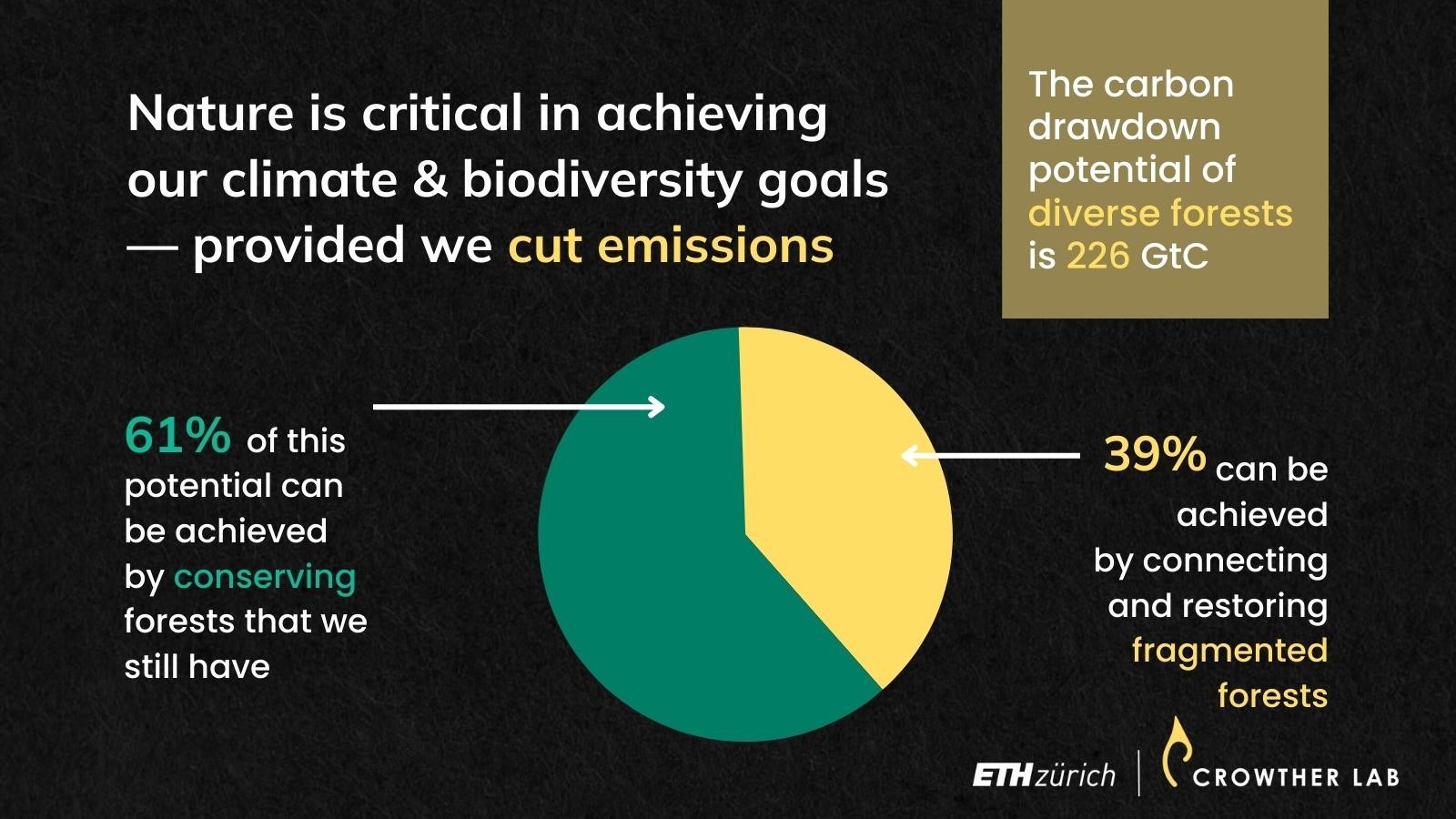
Our forests, oceans and soils hold enormous potential to capture carbon and the science is increasingly clear: unless we harness nature’s powers of sequestration, we will not achieve the climate goals of the Paris Agreement. To disregard this potential would be a catastrophe, pushing both the climate and nature past irreversible tipping points. Failing to conserve the world’s natural forests would also threaten the way of life of many Indigenous peoples around the globe.
Yet, there is hope. A new global assessment of the carbon capture potential of natural forests has, just this week, been published in Nature. It reveals that the natural forests outside of urban and agricultural areas could capture approximately 226 gigatonnes of carbon if they were allowed to recover from degradation and deforestation. That’s equivalent to approximately 23 years of human emissions.
The study states that 61 percent of this 226 gigatonne carbon capture potential can be delivered by conserving the world’s existing natural forests. That’s more than 135 gigatonnes of carbon emissions. For conservation to be successful, it must give priority to the rights and well-being of Indigenous peoples. Speaking of these findings, Lucy Almond, Director and Chair of Nature4Climate, said:
“With the world’s standing forests able to store such substantial volumes of carbon, it is common sense, as well as extremely urgent that we conserve them. There are just over six years remaining until 2030 and the clock is ticking.”
If scaled up now, nature-based solutions (NbS) – which include both forest conservation and restoration, whilst also prioritising biodiversity and the wellbeing of local communities – could provide one third of the emissions reductions needed to reach our global climate goals by 2030. But this is not a given. NbS require substantial private investment if they are to deliver for climate and nature.
The report explains how natural forests can provide climate mitigation and adaptation on a local, as well as global level. They help cool the local climate when it is hot, but warm it when temperatures are extremely cold. If temperatures are dry, trees lock in moisture, but if it rains heavily they draw water into the soil.

However, the report finds that forests will only be able to achieve the potential 226 gigatonnes of carbon storage if they provide home to a biodiverse population of animals and plants. Accounting for approximately 50 percent of a forest’s productivity, biodiversity levels influence an ecosystem’s carbon storage capacity. This means that if trees are cleared to make way for single species plantation, such as palm, it will dramatically reduce an area’s ability to sequester carbon from the atmosphere.
Moreover, the report warns that the possibilities nature presents for climate action cannot be harnessed without simultaneously cutting humanity’s greenhouse gas emissions. If fossil fuels continue to be extracted and burned, our global temperatures will continue to rise. With higher temperatures linked to increasingly frequent and severe extreme weather events, the consequences of continued extraction would be deadly for humanity. The report states:
“Nature cannot be an excuse to avoid emissions cuts. We need nature for climate and we need climate action for nature.”